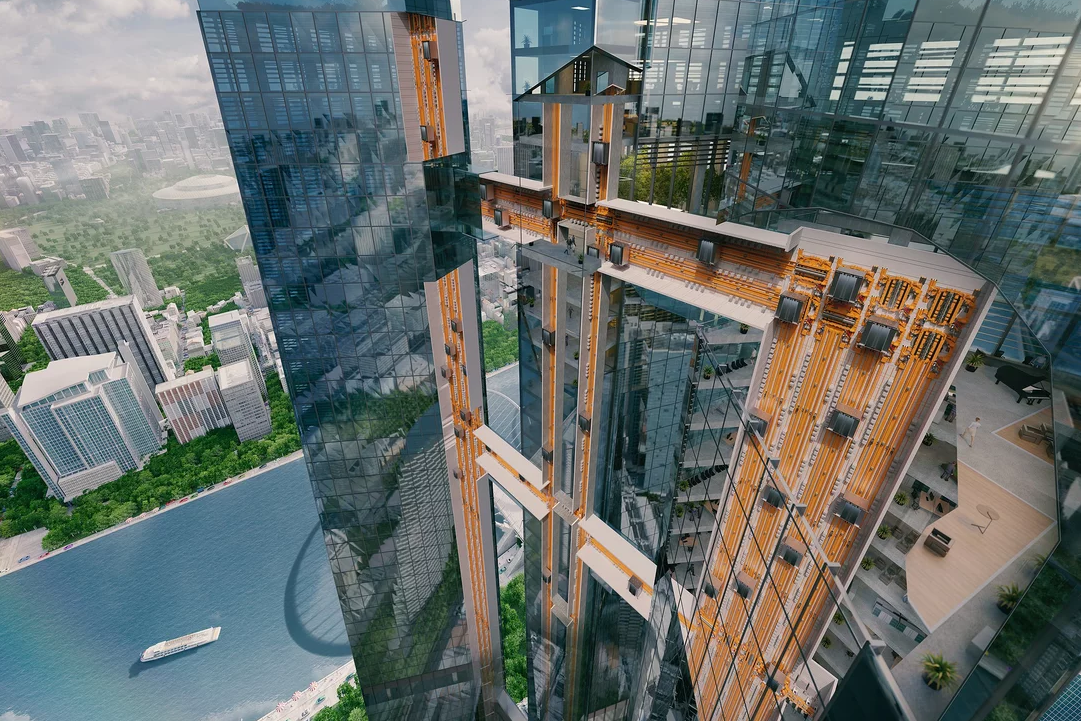According to Emily Stevens at Usability Geek, Top 5 UI Trends for 2018 are those, “that will captivate the user, whisk them away on an interactive adventure.”
1. Full-Screen Video
What was once a huge no-go is fast becoming the hottest thing in UI. Fullscreen video is taking over – quite literally. For many designers, this will come as no surprise. We have long been embracing the full-size image, so it was only a matter of time.
However, what is the obsession with immersive video? How does the user really feel about it?
More and more, video is championed as the ultimate brand storyteller. Indeed, nothing is more engaging than a larger-than-life HD film. For brands, this is a highly effective medium for getting their message across.
However, this is nothing new. What has changed, perhaps, is the user’s attitude. Back in the day, a full-screen video would have been way too intrusive – especially with pesky audio thrown into the mix. However, thanks to the rise of augmented/virtual reality, today’s end user is much more open to a fully immersive experience.
For UI design, this means plenty more freedom. 2018 will see high-definition, cinema-worthy video taking over our screens in a big way, à la Scotch & Soda.
2. Going Off the Grid
In 2018, we are saying goodbye to the grid. Ok, not quite – but we are bending it a lot to make our own rules.
One of the most significant trends next year will be borderless design; doing away with chunky borders in favour of fluid storytelling.
Many will say we have the iPhone X to thank for this trend. Indeed, the website is a stunning example of sleek, borderless design in action – much like the phone itself. However, infinity screens and low-bezel smartphoneshave been a recurring theme throughout 2017, so it is not hard to see why borderless design is on the up.
Traditionally, designers have relied on grid-based systems to create consistent, logical blueprints. However, our newfound penchant for “edgeless” screens gives rise to a whole new way of thinking. Throughout 2018, UI designers will dare to venture further and further beyond the grid – paying less heed to rigid lines and instead of trying their hand at more fluid designs.
Indeed, outstanding UI is all about creating a seamless flow for the user, and borderless design will take this to new heights.
3. Supersize Typography
Video is not the only thing going large in 2018. Typography is getting unmistakably bigger, with UI designers genuinely embracing the oversized headline.
Like everything in UI, this larger-than-life trend is all about usability. Text is there to be read, after all – and the bigger it is, the sooner the user sees it. That means less time searching, more time reading; a victory for UI.
Surely this is obvious, so why is giant text suddenly a thing?
This is a carry-over from the flat design trend. Flat design focuses on minimal, simplistic typography, and, in the absence of stylistic variety, increasing the size of the text is another way to grab the user’s attention. While flat design is not such a hot topic for 2018, big text will continue to reign supreme.
Inevitably, the arrival of new trends sees old ones taking a backseat. With the rise of supersize text, colour contrast is no longer so important. So, throughout 2018, we can expect to see less colour-play and more experimentation with text size instead.
4. Vibrant Colors
We have already mentioned that flat design seems to be fizzling out – or evolving, at least. Forget muted tones and understated palettes; in the world of UI, 2018 will be the year of colour. From hot pinks and neon greens to acid yellows, we can once again look forward to some seriously vibrant colour combos.
Not only that. We can also celebrate the return of gradient. Thanks to the likes of Spotify and Instagram, the gradient will be trending in a big way. More and more, we will see UI dabbling in two-tone – be it image overlays with gradients, duotone overlays or more subtle colour transitions.
The best thing about this trend? It is easy to make it your own. There is so much room to experiment, 2018 will no doubt ignite many sub-trends. Watch this space!
5. Long-form Content
Part-trend, part-challenge – whichever way you look at it, long-form content will dominate in 2018.
The advantage of long-form content is that the user does not need to switch through various screens; they get all the information they need simply by scrolling. This single fluid motion is much more user-friendly than, say, clicking through a menu or going through multiple redirects.
For mobile users especially, such functionality can make or break the experience.
Brands are also pretty keen on lengthy content since it is good for SEO.
So what is a UI designer to do with all that text? Moreover, whatever happened to the above-the-fold rule?
This is a conundrum that more and more designers will face in 2018. Long scrolls will be critical, but the rise of long-form content may call for more innovative solutions. How will UI tackle this? Only time will tell.
Wrap Up
So what will UI look like in 2018? On the whole, we can expect to see a shift towards more experimental designs. Any lingering shyness when it comes to video will all but vanish, and designers will seek out more and more ways to create a truly immersive user experience.”













